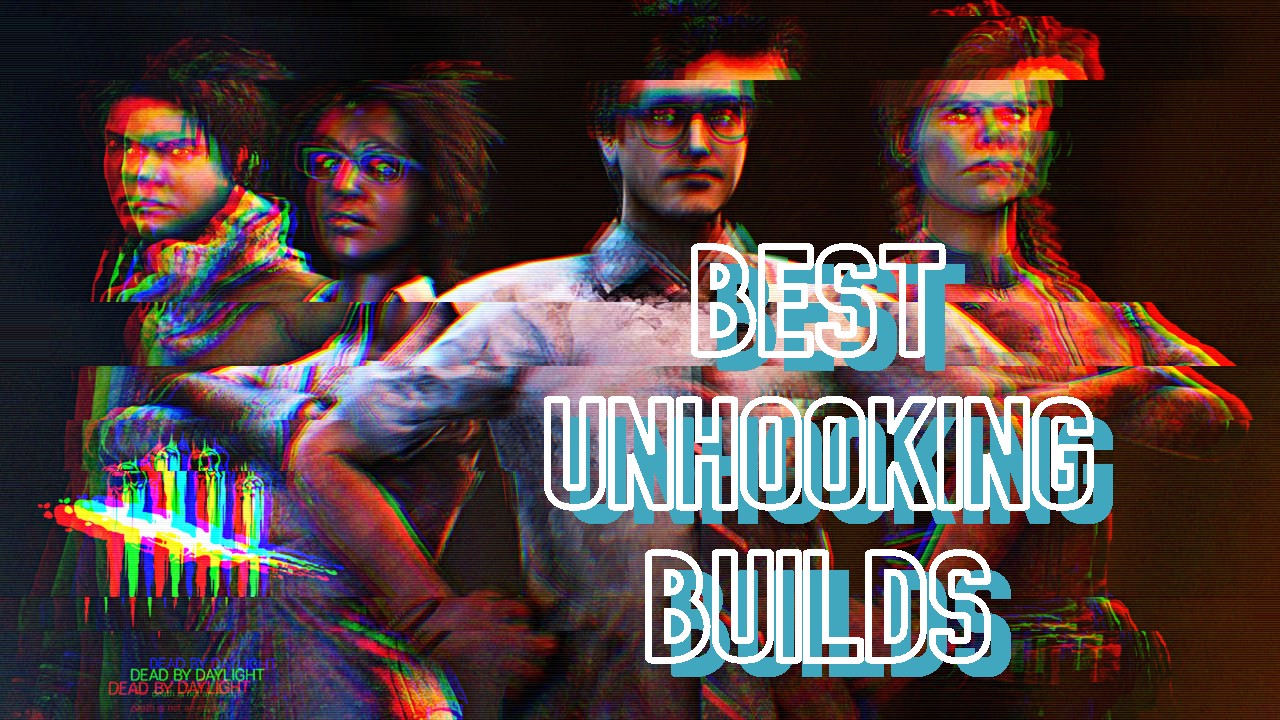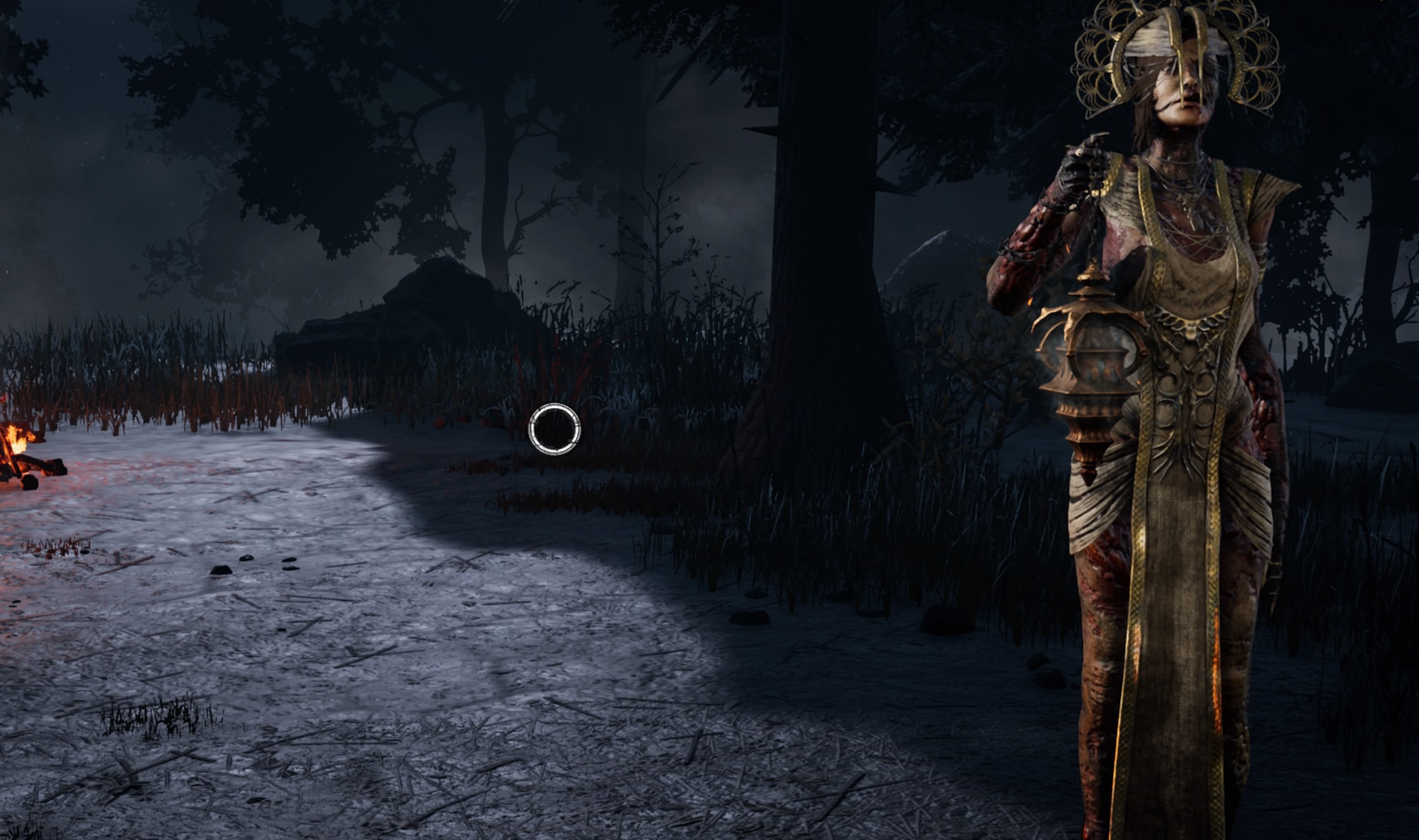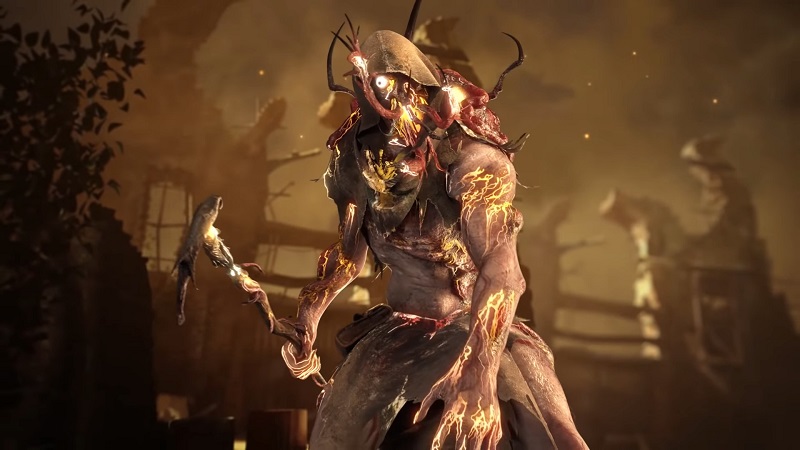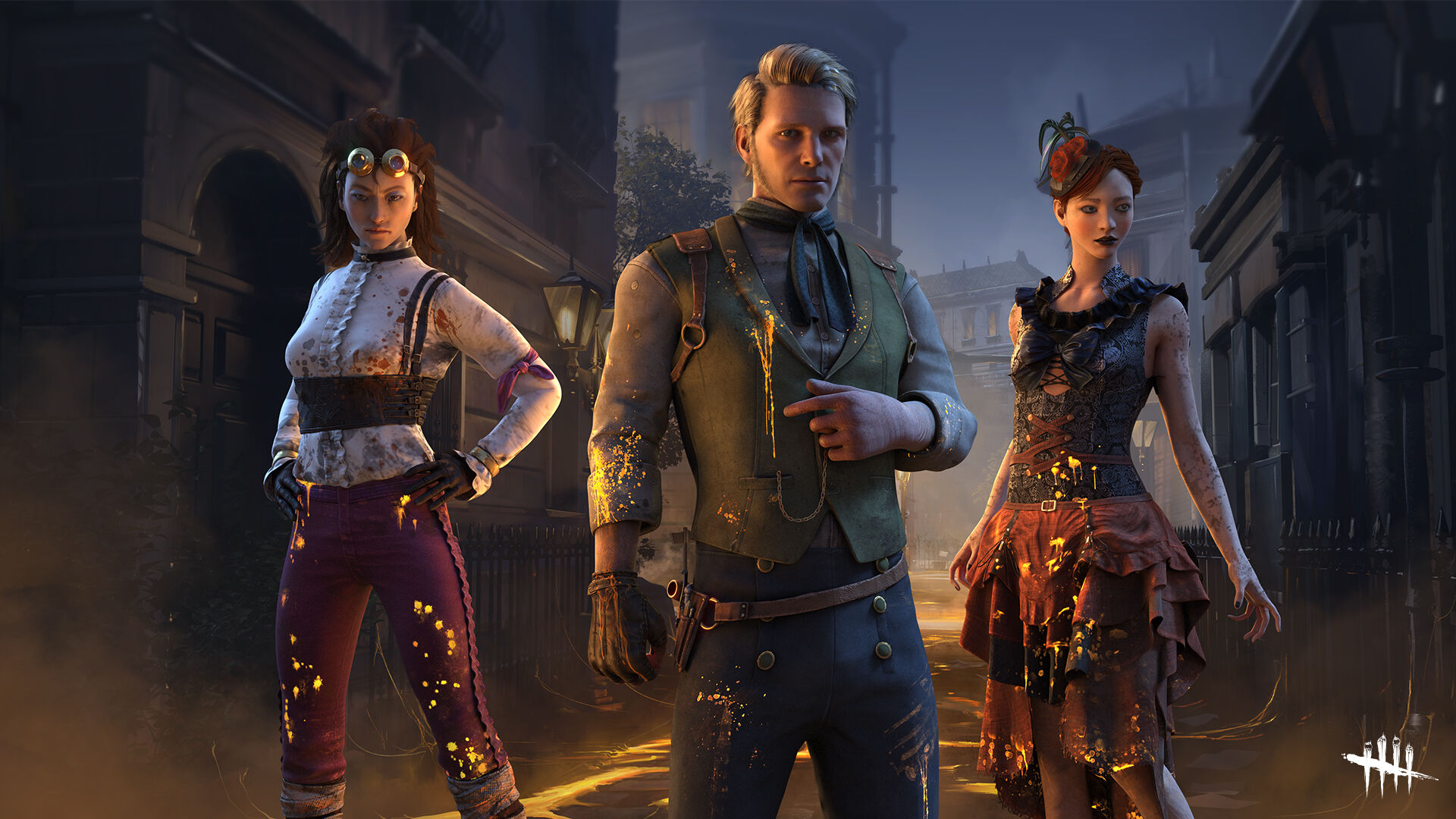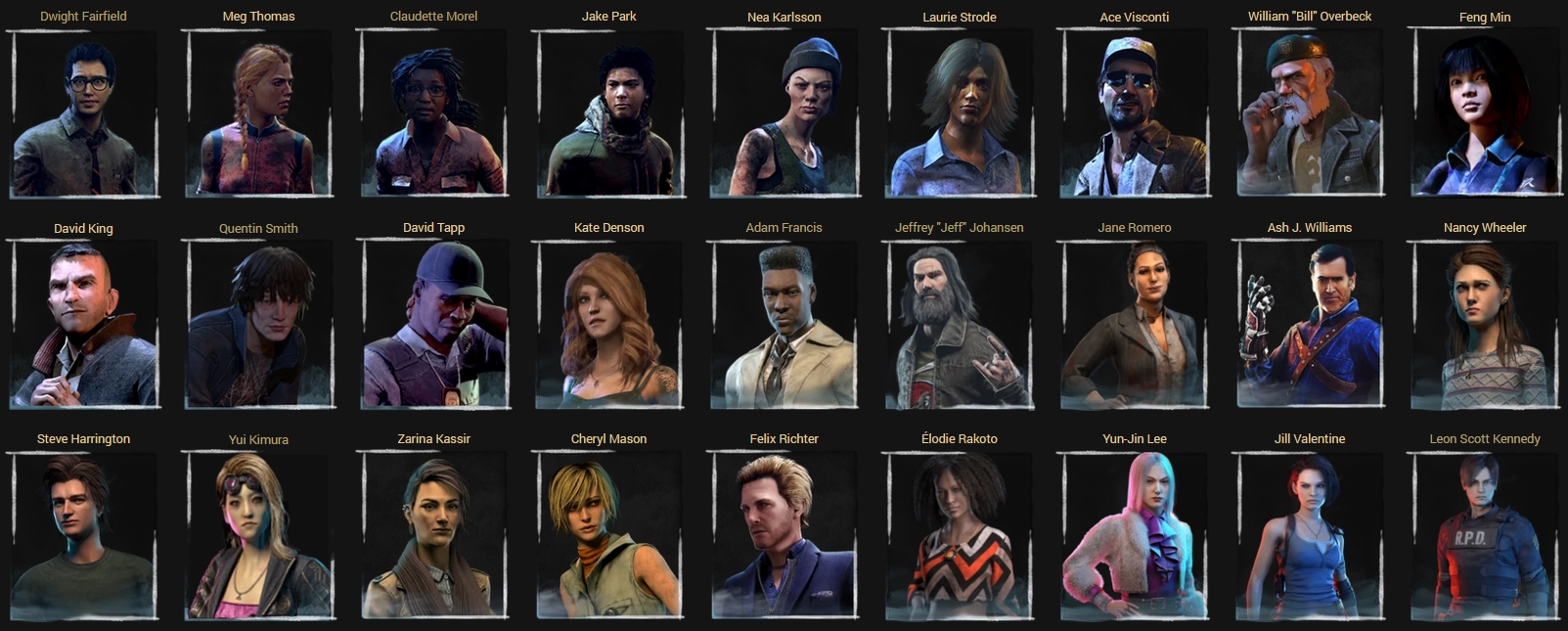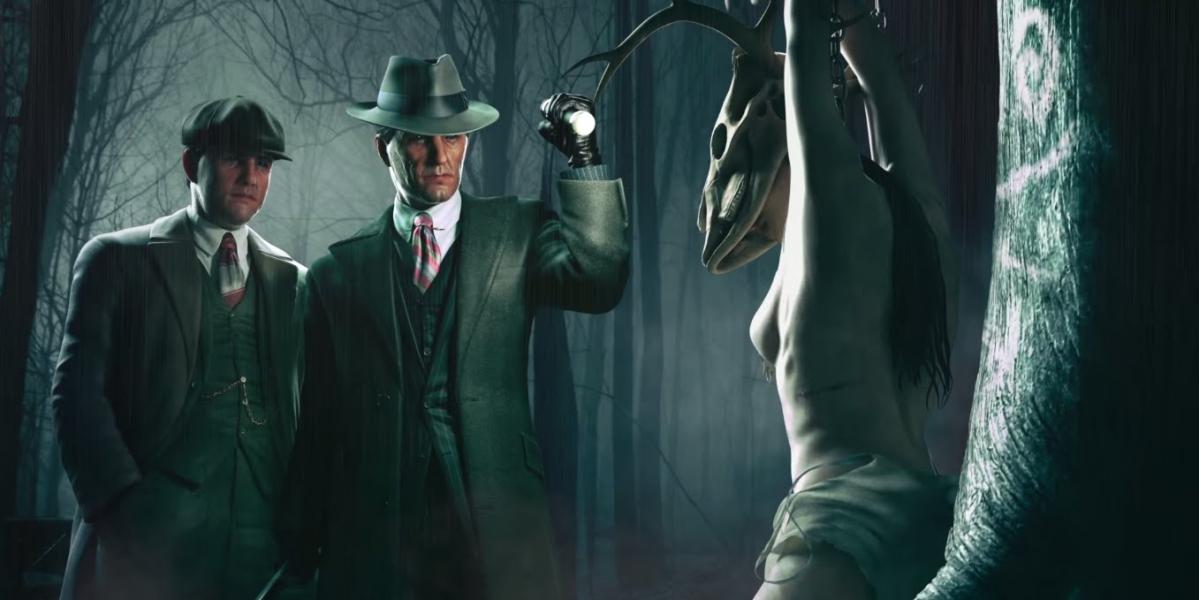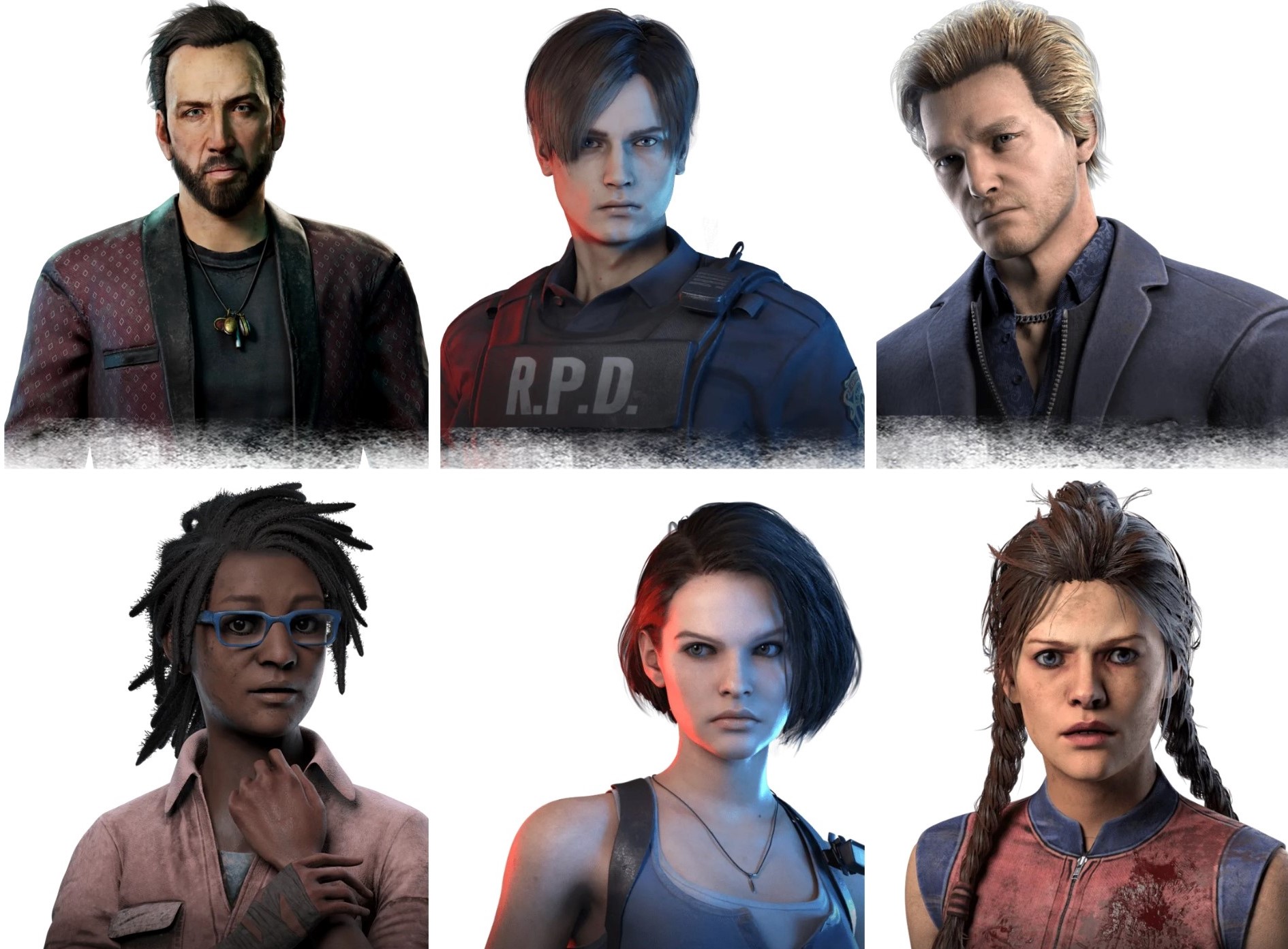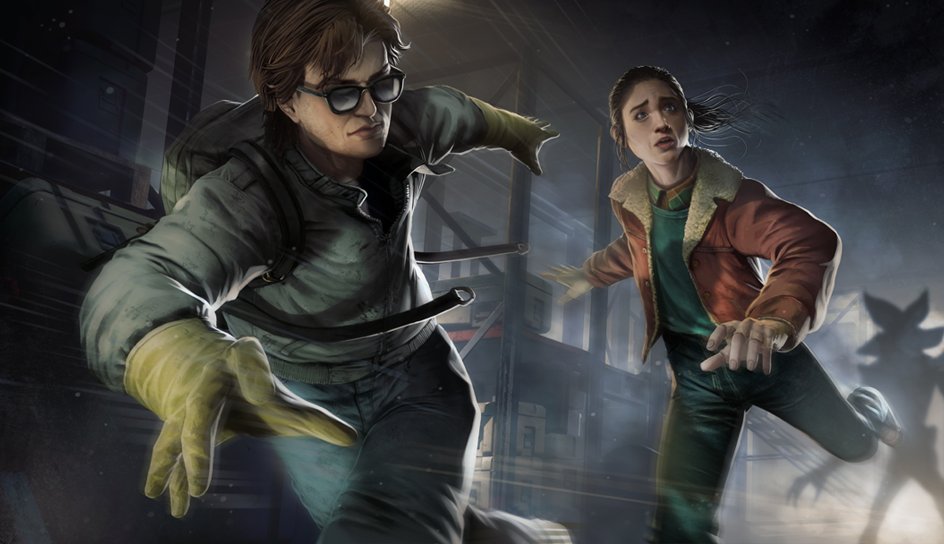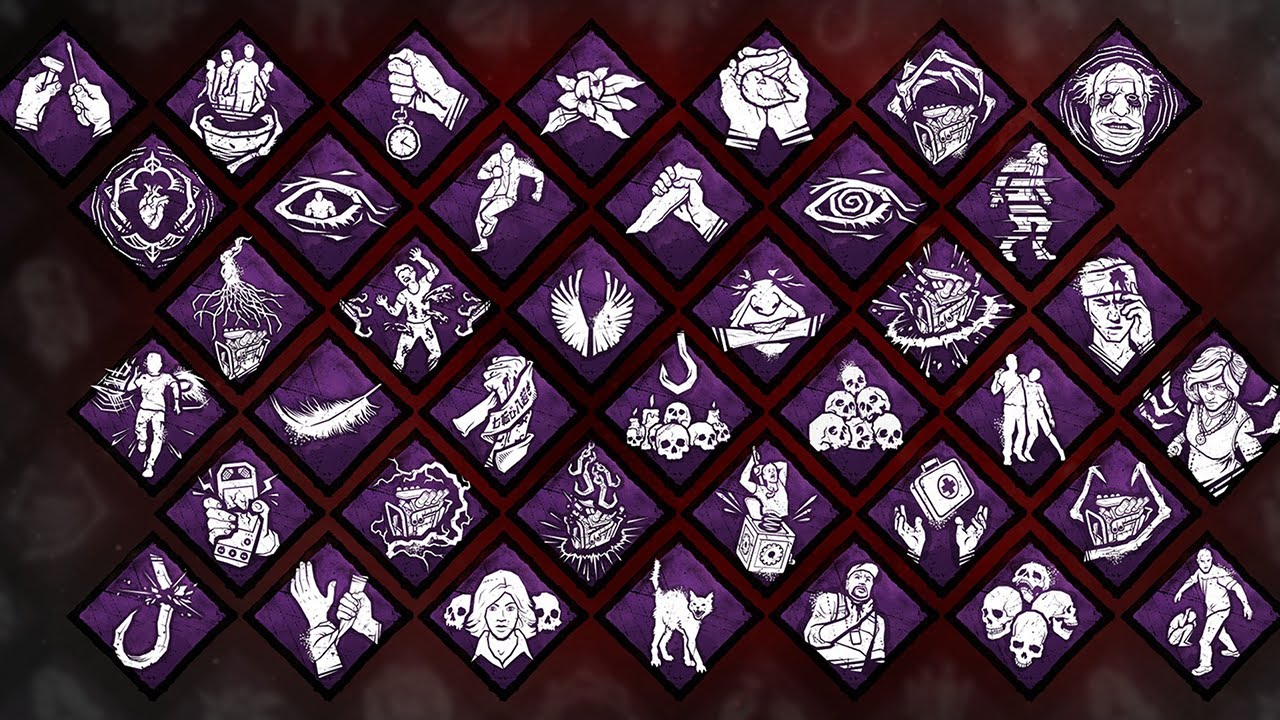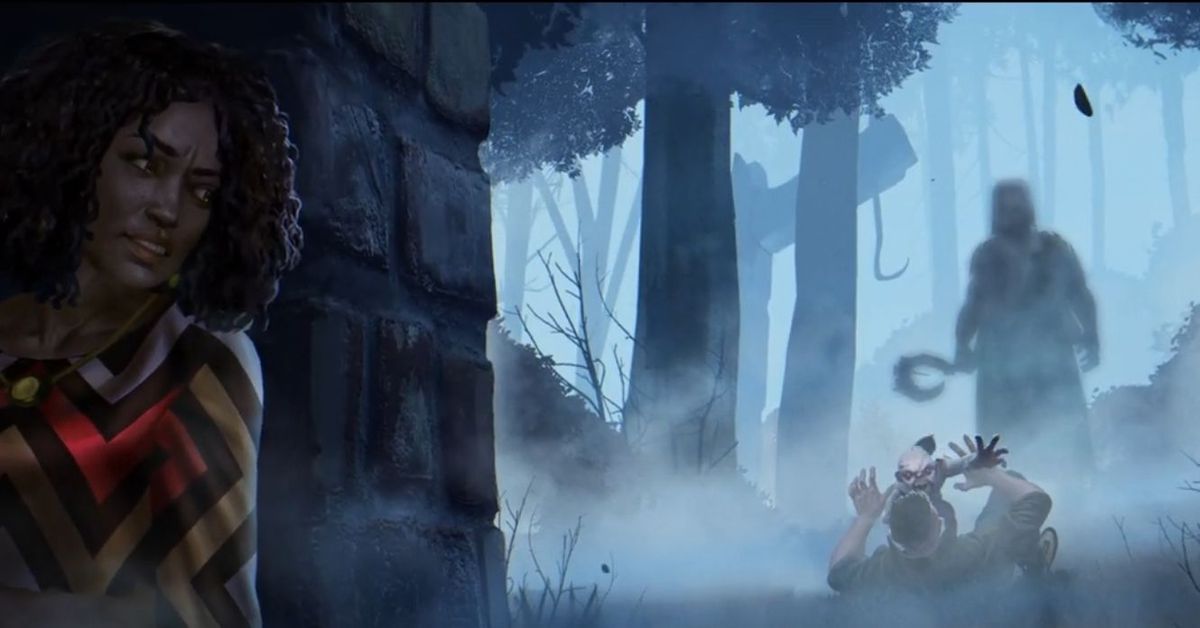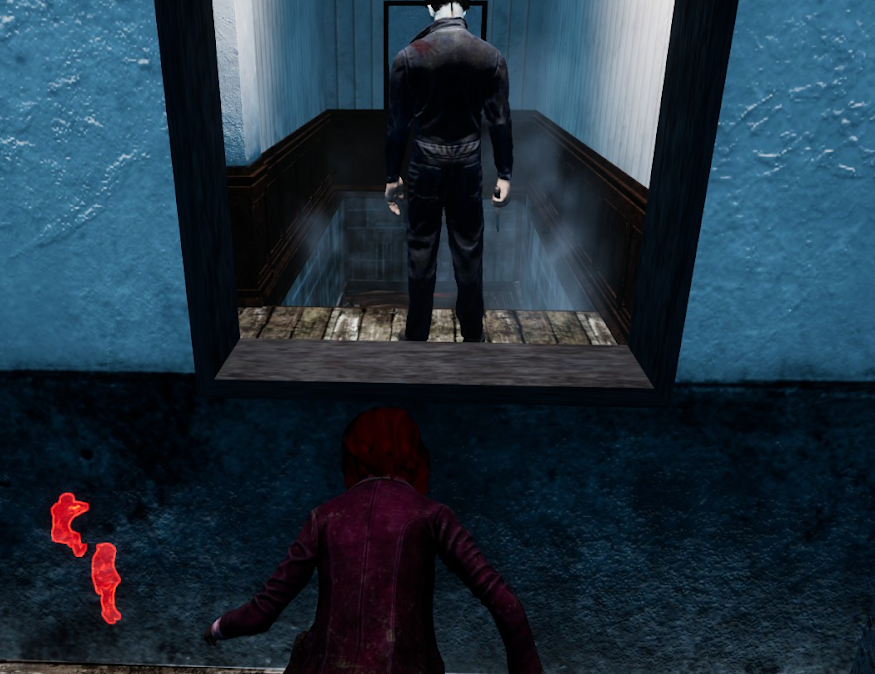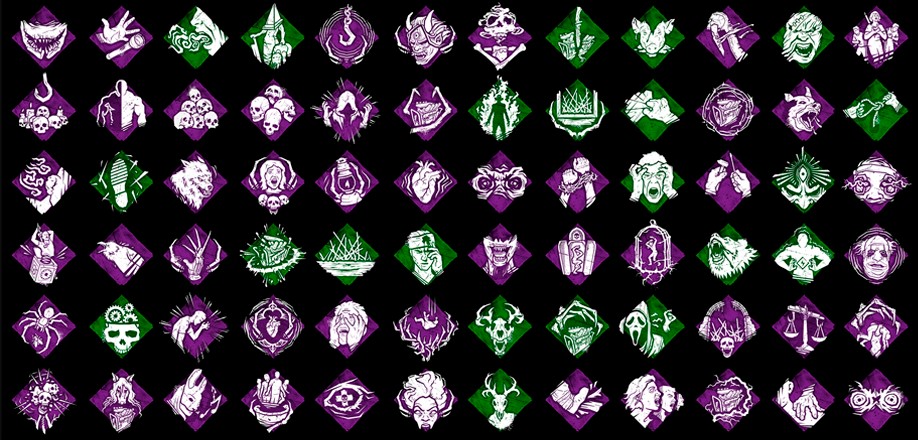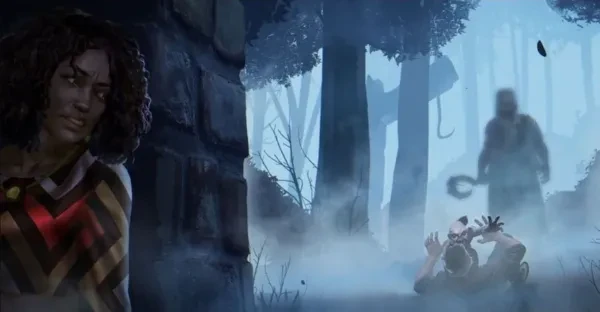
We’ve all encountered those killers that just seem to hit every single survivor non-stop, you and your team have all been hooked at least once and no generators have been repaired. After reading this list, you’ll be ready to face up against the higher ranked killers in the game.
In my previous article, we discussed the 25 best killer tips. Now call me “decisive strike” because I’m stabbing killers in the back with this new article explaining the top 25 tips for survivors in Dead By Daylight.
25. Choosing the right survivor
What is a survivor? A miserable little pile of perks.
Unlike killers, survivors don’t have different stats from one another. But this doesn’t mean they’re equal, specially at the start.
Every survivor has different perks that, until you’ve leveled them enough, you won’t be able to equip on different survivors.
Even if you did have every perk unlocked, you won’t have every perk on every survivor unless you grind every single character for an impractical amount of time.
I would recommend you take every survivor up to level 15 at least, so you can equip all 4 possible perks and test them all at the same time before making a choice as to whose your favorite.
Finding the right survivor for you at the start will be incredibly important for you in the future when you’re mix-and-matching perks to create the build that works best for you.
24. Finding your playstyle
Oh, yeah… I’m supposed to run, right?
What kind of survivor are you? Do you stick to teammates? Are you more of a lone wolf or an altruistic player that runs after every hooked player?
The truth is both are needed to win a game, if everyone ran after a hooked survivor then no generators would be fixed. If you’re good at avoiding the killer’s sight, you might be best fitted to be more of a lone wolf. If you’re good at running away from the killer, juking them and losing their line of sight, you would probably make a good distraction for someone else to save a survivor or even distract them long enough for the generators to be completed.
However, sometimes you will have to fill the role that’s needed most. Pay attention to the other survivors and their playstyle. Make sure to fulfill the needs of the team.
Finding what you’re good at is an important step to becoming a better survivor, and your teammates will thank you for this!
23. Know your enemy
Sheep in wolf’s clothing.
Same as I said in the killer tips article, playing your enemy will give you invaluable intel. Not only will you slowly learn what each of the killer perk does in more detail, but you will also learn how to act as a survivor in these matches. Take note of how you lose them, what they do wrong and what they do right. Sometimes the best way to learn how to survive is to kill.
Once you feel like you learned enough, apply this new knowledge and apply it to your survivor playstyle to become a mighty scared teenager.
22. Who’s that killer?
I’m pretty sure I just saw the hag venting
The start of the match can give you a lot of information about whom you’re dealing with.
This goes without even mentioning the fact that if you’re going up against a killer for the first time, the loading screen will give you a tip as to how to fight said killer, which is a great way to know when you’re going up against a new killer.
If the killer is Freddy, you’ll see the clock ticking in the HUD, signifying when you’re going to fall asleep. Zombies in the map? Then it has to be Nemesis.
Almost all the killers have some sort of giveaway you can pick up near the start, and if you don’t, then there’s a good chance you’re facing a stealthy killer, so watch out!
Knowing who you’re up against at the start will take the element of surprise away from the killer, as you know what to expect.
21. Perk finding
Riddle me this.
Figuring which perks a killer has is easy once you get to know them. Most perks have some sort of effect that displays itself in the screen (such as blindness, represented by a tiny red eye icon)
If the killer has a hex, it’s normally easy to tell. If you fix a generator, and it starts regressing as soon as you let go, the killer has “Hex:Ruin”, so now you’re 25% done figuring out the perks!
Did the killer runs towards a survivor that’s far away? He might have Barbecue & Chilli.
The sooner you figure these out, the better. As it lets you know what to expect for the rest of the match, what they’re capable of and what they aren’t.
20. Hexes
Save us from the man with the hex.
Hexes are possibly the most annoying kind of perks that a killer can equip. For the uninformed, these perks have extremely powerful attributes, but their downside is that you can find little bone piles that you can destroy and, with it, the perk itself. Basically leaving the killer with one less perk.
These bone piles, known as totems, always appear in the map in fixed locations that are randomized. There’s always 5 totems in a map in every match. You can recognize which of these totems is carrying a Hex by the fact that it’s lit up by a flame.
How you deal with them is up to you. Normally, it’s wise to destroy these. But there’s a specific perk called “Hex: Haunted Ground” which makes it so that there’s two lit up totems and if you break either every survivor will become exposed.
So if you find yourself not even noticing any particular hex in effect, then maybe the lit up totem you found is Hex: Haunted Ground.
Even if you can’t find any totems lit up, it could still prove worthwhile to destroy them as you could prematurely get rid of Hex: No One Escapes Death, which lights up a random totem in the map and makes it so that every survivor can be downed in one hit after the last generator is fixed, besides giving the killer a small speed boost.
Knowing how to deal with totems is important in Dead By Daylight. Take note and remember spawning locations, then decide if you think it’s worth it to destroy them based on the knowledge you picked up from the previous tip.
19. Getting downed
'Tis but a flesh wound, have at you!
So you got downed by the killer, and he left you to your own devices, maybe he got distracted by someone else. What do you do now? Well, you have two options now. Either drag yourself to a safe place where you don’t think the killer can find you, or you can recover yourself to make it easier for another survivor to finish healing you.
In most cases, it’s safe to assume that the bestoption is to recover your health so that another survivor can finish it. Even if you did manage to drag your sorry butt to a safe place, the killer could still find you by the whimpers and groans your survivor makes when wounded.
However, in certain situations it might call for it. Like if there’s a pallet nearby that hasn’t been dropped. Get yourself under it, and maybe a nearby survivor will get the hint and come save you.
Otherwise, it’s a better idea to recover yourself and hope for the best, maybe that one survivor that hasn’t been helping a lot in the match will finally get to redeem themselves.
18. Attention span
No, not yours… well, maybe, yeah.
The killer can only focus on one thing at a time. He can’t be chasing you and someone else at the same time, as he can’t kick a generator and hook a survivor at the same time.
If a killer isn’t paying attention to you, to you, then that’s your window of opportunity. Finish that generator, go save the hooked survivor, anything is possible as long as someone else is the center of attention of the killer. You have to make these kinds of moments count in order for this to be worthwhile, just, for the love of god, don’t stay in the locker if you know he’s not looking for you.
The killer won’t be able to react quickly enough, and you’ll get to make any important move that you previously couldn’t, even if he switches his focus onto you, that’s someone that you’re saving.
17. Loud sounds
The killer couldn’t see it coming, but he sure as hell heard it.
Whenever you fail a generator or make a running action, such as vaulting over windows or pallets, you make a loud sound and a notification shows on the killer’s screen, showing him your current location.
This is usually bad, but it has its advantages. Obviously, if you’re in the middle of a chase, all bets are off. Fast vaulting has very little effect if the killer can already see you, however, if you break the line of sight, it’s advised that you try to slow vault over an obstacle and keep the line of sight broken as the killer would expect you to keep running. You will throw them of their rhythm and possibly open a window of opportunity to run away where there previously wasn’t one.
Another use of sound is to distract the killer in a chase. Do you see the killer chasing someone who’s on their last effort, if it’s looking bad enough that you want to save them? Breaking a generator or vaulting over windows might just save your ally in their times of desperation.
So, basically, you should avoid making loud sounds unless you know exactly what you’re doing.
16. Escape route
Exits are located here, here, here and here… oh and there comes the Hillbilly
Whenever you are working at a generator, you’ll be sitting in a single place for somewhere around 80 seconds if you’re alone and not using items. So why not use this time to reflect?
Look at your surroundings, think about where you’ll run to if the killer comes in from either opening. Place yourself in a side of the generator that leaves you closer to an exit, just in case.
This also applies if you’re rescuing a survivor. As you approach them, take note of your surroundings and begin creating a plan of escape.
Most situations give you enough time to think up an escape plan, so don’t just pull up your phone or zone out!
15. Items
“You have my sword” “And my bow” “And my flashlight”
Items are the main difference in equipment between killers and survivors, since killers can’t equip items.
There are two ways of getting items. You can find get them through leveling up your character, or you can find them in a match inside of chests. By default, there are only 3 chests per match, although this can depend on a number of factors.
It’s up to you to learn how to properly utilize these items right. If you have a toolbox, you can either use it to speed up a generator repair, but maybe you want to save it just in case you can break a hook just before a killer hooks a survivor in order to increase their chances to escape.
Healing is always a nice ability to have when you have an Aid Kit.
Possibly the most useful but also the hardest item to use is the flashlight, as it can blind killers and force them to drop survivors. However, like I said, this is an extremely hard item to master and chances are you’re going to end up looking like a fool when you run up to the killer, and they just turn their backs on you. And you know you’re going to be next on the naughty list, so you better go back to hiding!
Also, it should be noted that the killer can see you holding whichever item you take with you into a match in the lobby. If you take a key, they will know you’ll be looking for the hatch.
Lastly, don’t think just because you have a high rarity item, you should keep it even if its depleted. Items are extremely replaceable, and you will get many more, too many in fact. So don’t be afraid to drop the old and get with the new
Also, did you know you can force the Wraith out of invisibility by illuminating them with the flashlight?
Knowing when and how to use items is extremely important when we’re trying to get an edge on the killer
14. Don’t get tunnel vision
Why does the killer keep coming back to this gen? It’s only 95% done.
Sometimes focusing on fixing just one generator can be a bad idea.
If you get chased away, you might want to consider fixing another gen for a while before going back. If a generator has a lot of progress, it’s possible that the killer will be stalking it until its progress goes down enough that he feels it won’t be finished while he’s away.
Besides being safer for the survivor. Having a little progress on a lot of generators will make the final stretches of the match easier, as you won’t have to start generators from scratch.
Like I said before, the killer can only focus on one thing at a time, while they’re focusing on an unoccupied generator, the rest of the survivors can finish any of the other generators.
13. Mind games
You might know everything I’m going to do, but that’s not going to help you sense I know everything you’re going to do. Strange, isn’t it?
While being chased, you shouldn’t just think about which path you’re taking, you should also think about which path does the killer think you’re going to take.
Sometimes the killer is behind you and the next thing you know, you go round a corner, and they’re right there waiting for you, which sucks.
Becoming unpredictable is hard, but also an extremely useful tool when dealing with a killer.
Vaulting windows and going the long way around back to it instead of a faster route. Running towards a pallet and not dropping it. Fake going to a window just to turn away at the last moment.
Anything that the killer wouldn’t expect. If possible, avoid using the same tactics more than once or twice, since the killer will wise up eventually.
Becoming unpredictable goes hand in hand with the third tip, as knowing how a killer plays will help you understand what they wouldn’t expect. This way, you’ll find yourself escaping chases way more often.
12. Look back
They’re right behind me… aren’t they.
Looking back at the killer while they’re chasing you sounds like a no-brainer, but it’s actually a lot tougher than it sounds.
Most people use the red light that the killer’s line of sight produces to tell which way to go or how far behind the killer really is.
In truth. If you manage to look behind, you’ll get way better intel to apply in your escape. If it’s a ranged killer you’ll know when to dodge a projectile, if it's a stealthy killer you’ll know when they’re pretending to go somewhere else. Cheeky tactics like that won’t work anymore for the killer.
After you manage to make a mental note of everything that’s ahead of you, enough to turn the camera and look back at the killer chasing you, you’ll find yourself becoming better at losing the killer.
11. Lockers
I’ll help the match in my own way
Lockers are not that useful… HOWEVER, lockers, in certain highly specific situations, can become a really useful tool.
Hiding in a locker mid-chase will usually just not work. If you do it fast, the killer gets a notification telling them you did, and if you do it slowly, there’s a high chance that the killer will see you going in.
So when can you use these godforsaken wooden case of emotion?
There’s a lot of perks that mix well with lockers.
Say the killer has Barbecue & Chilli, the killer won’t be notified of your location if before the survivor is hooked you’re already inside a locker and remain there for roughly 8 seconds.
Say you have “Inner Strength”, then the lockers will heal you, granted you destroyed a totem beforehand.
You can also use these to distract a killer that’s chasing another survivor by making a ruckus.
Lockers are not extremely helpful, but that doesn’t mean you can’t use them ever. Learning about how to use them right could be a key element in your playstyle and help you save everyone in the match, including yourself… Just don’t go into one at the start of the match and just stay there, Dwight...
10. Saving survivors
Let go of her, you witch!
So the killer grabbed one of your friends and gave them a one way ticket to hook town, population: your friend.
Don’t panic, there are ways to ruin your ally’s appointment with their sharp friend, and we’ll get into them now.
Dropping a pallet: If the killer grabbed a survivor and is passing through an unused pallet, you can drop it onto the killer to immediately save the survivor, this leaves you open to attacks but at least your teammate isn’t hooked.
Flashlight: If the killer is walking towards you, you can light them in the face with the flashlight, doing so for a short time will force the killer to drop the survivor and become stunned, giving you both enough time to escape, even if the killer gets wise to your tactics and turns their back, you’re still wasting valuable time for the survivor to wiggle. This tactic works better if you have the element of surprise.
Take a hit: If you walk near a killer that’s holding a survivor there’s a good chance that they’re going to attempt to hit you, this slows them down and gives the survivor more wiggle time. Also, if you stand near a hook just right, the killer will be forced to strike you in order to hook the survivor, you can attempt to cooperate with other teammates in order to save the survivor by tanking hits.
Learning these tactics will drastically improve the whole team’s chance of survival. The more people alive, the better.
9. Hatch
Welp, it’s time for the worst case scenario.
If you had a rough match and the killer managed to get every player killed except you, the hatch will both spawn and open immediately.
Now here’s what you can do about it. If at the beginning of the match, someone used either “Annotated Blueprint” or “Vigo's Blueprint” you will already know where it might have spawned.
Even so, there’s still three options you can choose.
You can look for the hatch at the same time the killer is. Remember that the killer has the advantage here because they’re faster, and they’re not hiding from anyone.
Or you can go find a random exit gate and ready up, because as soon as the killer closes the hatch, the doors will activate, giving you 20 seconds of intense lever pushing action.
The third option, though, is finding a key. Check for chests, or maybe if a survivor that’s now dead dropped one in front of a hook pole. Even if the killer closes the hatch, you can still enter it if you have the key. This is by far the safest choice
These are… not the best scenarios to find yourself in. however, you need to make the most of these. Don’t panic, make up your mind about one of these three tactics and commit, no looking back. You might be able to survive certain death.
8. Vaulting
I actually learned this one myself doing research for this article…
There are three types of vaulting when we’re vaulting over windows, somehow no one ever seemed to want to tell me, thanks a lot.
Running vault: an action you can take when you’ve been running straight for a window for 2.5 meters. This is the fastest form of vaulting, only taking 0.5 seconds, of course, like any running action, this will alert the killer unless you’ve got the perk “Quick & Quiet”
Medium Vault: if you’re running but don’t have enough momentum, or you come to the window at an awkward angle whilst running, you will be making a medium vault, these take 0.9 seconds and, again, alert the killer. I seriously have 540 hours of this game and never knew the difference between running vault and medium vault…
Slow vault: if you approach a window slowly, this takes 1.5 seconds, but it doesn’t alert the killer, but it does make a sound that an experienced killer can recognize if they’re close enough.
After attempting these myself, I can already tell I’ve been missing out on a pretty useful tactic. Give it a shot!
7. Looping
Who’s chasing who.
Looping is the act of running around an obstacle while the killer is chasing you. If you’re doing it without the killer chasing you, that’s called being nuts.
Looping is useful not only to try and find a window to escape, but also to give your teammates time to finish generators!
Usually, loop worthy obstacles have a pallet somewhere within it. You don’t have to necessarily drop it the first chance you get. You can always just pass through it and the killer, thinking you’ll drop it, will back off to avoid being stunned, in the community this is called “respecting the pallet”
There are various kinds of loops, some are more safe than others, usually the rule is, the bigger the loop, the safer it is. So keep an eye out.
Don’t take loops for granted, as you’re running around in circles make sure to stop any window of opportunity and take it as soon as you think the killer can’t immediately hit you. The longer you can dance with the killer, the more progress the other survivors will make.
6. 3 Gen situation
Spread out.
A 3 gen situation is what is when you’ve reached the last generator you have to fix, but the remaining three are so close together that the killer can easily patrol all three generators.
The last thing that you want is the killer looking over your shoulder to see how you’re doing. To avoid this, be mindful of the generators that you’re fixing, try to finish the ones at the center of the map first to easily avoid this annoying situation.
If you’re alone, a 3 gen situation is an almost guaranteed loss, so trying to avoid this is a great tactic for the endgame.
5. Keeping up with the community
What did they change now
This one’s a shared tip between killers and survivors.
If you didn’t read my killer tips article, changes to perks, on both sides, is extremely common in Dead By Daylight. They’re so often that I attempt to make these articles mention them the least possible, just in case there’s a big change to one of them and suddenly this article becomes obsolete.
Perks and even items get constant buffs, nerfs and reworks as to how they work. I recommend looking at the Dead By Daylight Subreddit will help you a lot to keep up with the changes. This way, you won’t be blindsided when a change suddenly destroys how your perk build works.
4. Teachable perks
I can’t afford all these dang DLC.
If you don’t want to get a DLC for the game, but you know the survivor in it has a great perk for your build, fret not, in the game store there’s a section called “Shrine Of Secrets” which lets you buy perks from both free and paid characters, this doesn’t use premium currency, but a currency you get whenever you level up your account.
Keep track of these perks because they change each week. There’s always 2 for killers and 2 for survivors.
This is a great and cost-effective way of getting perks you really want!
3. What is winning?
Winning is when I finish a match of DBD and I haven’t popped a blood vessel.
Dead By Daylight doesn’t really have a clear way to tell a winner from a loser. The only clear way of telling someone won is either all survivors escape or everyone died.
Maybe you made a move that let the killer down you and hook you, but maybe that also allowed the rest of your team to escape. I usually count these as a win personally.
Some people usually count any match where they made progress in their rank as a win.
I recommend you don’t think too much about it, instead, try just playing the game and having fun. Dead By Daylight is an extremely fun game, and you’ll only ruin it for yourself if you keep thinking about this trivial things.
2. Survive With Friends
Now we’re talking. Literally.
Getting on a call and playing with other survivors is not required to win, nor does it ensure it. But it does make the game more fun.
Now you can have a new layer of communication with your team, telling each other what the killer is doing, and you’ll be able to tell the killer’s perks way faster if you cross-reference your knowledge of them with your team.
Constantly knowing where the killer is also goes in handy when you’re thinking about whether to go save the hooked survivor or sticking to the generator you’re currently fixing.
Playing with friends doesn’t guarantee a win, though. Specially on high ranks, exceptional team play is required to win in those situations. Playing with friends just makes that easier.
1. Playing alone
Because my friends keep dragging me down
Just because you’re playing alone doesn’t mean you’re at a disadvantage.
There’s plenty of perks that you can equip to make up for the fact that you’re not in a call with friends and allow you to make team plays just as if you were with friends.
Kindred: this one’s possibly the most useful one to have if you’re alone, and you want to guarantee more teamwork. What it does is that if you’ve been hooked, every survivor can see each other’s locations, this way they know who’s going for the hook and who isn’t.
A lot of times people aren’t rescuing other survivors because they figure someone else is going, this will ensure that won’t happen.
Now, if someone else is hooked, only you get to see everyone’s locations, so it falls on you to know whether it’s a good idea to go.
Better Together: What this perk does is it makes it so that any nearby survivor can see the Aura of a generator you’re working at. If a survivor is being chased, and they see that, they might know not to go near you as your progress would be ruined and if someone else sees it, they might come to help you finish it.
Self-Care: This one isn’t as much of a teamwork perk as it is an “I’m by myself” perk. It allows you to slowly heal yourself even without an Aid Kit. You never know just how into teamwork the other survivors will be, this perk is effective in those situations.
There’s plenty of ways to circumvent the fact that you’re not playing with friends at the moment, so don’t feel like you’re actively playing with a disadvantage if you’re alone.
So there they are. 25 tips to play survivor in Dead By Daylight. Hopefully, like me, you will be learning something you didn’t know before you started reading this.
Let me know what you thought! Did you learn anything new? Did using these strategies change your outcome in matches at all? I want to know!
Now, if you excuse me, I have some killers to loop and some windows to fast vault over.
You May Also Be Interested In:
- Dead by Daylight Survivor Guide: Top 25 Tips
- Dead by Daylight Killers Guide: Top 25 Tips
- [Top 10] DbD Best Killer Builds That Are Great!
- [Top 100] Dead By Daylight Best Names
- [Top 10] DbD Best Survivor Builds That Are OP!
- [Top 10] DbD Best Killers And Why They're Good
- [Top 15] DbD Best Killer Perks And Why They're Good
- [Top 15] DbD Best Survivor Perks And Why They're Good
- [Top 10] DbD Best Survivors And Why They're Good
- [Top 10] DbD Best Survivor Builds That Are Great
- [Top 15] Ghost Games To Play Today
- [Top 15] Horror Movies That Were Books
- [Top 15] Best Horror Movies That Were Banned


